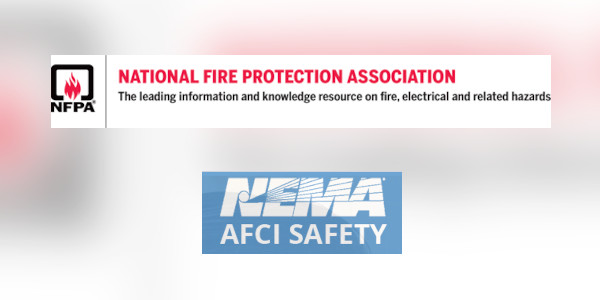ARLINGTON, VA – The United States has seen a substantial decrease in the number of residential electrical fires over the last four decades according to a new report soon to be published by the National Fire Protection Association (NFPA). The 2015-2019 home fire estimates for electrical-related fires were 31% lower than in 1980-1984, home fire deaths were 9% lower and home fire injuries were 18% lower. This can be attributed in part to life safety advancements such as smoke alarms, smart home technology and arc-fault circuit interrupters (AFCI) supported by strong National Electrical Code® (NEC®) requirements.
In 1980, the U.S. experienced a peak of 75,000 residential electrical fires according to NFPA, prompting the Consumer Product Safety Commission (CSPC) to work with electrical manufacturers to create the AFCI circuit breaker technology that by 1999 was detecting and stopping dangerous arcing in damaged wiring behind walls and damaged electrical cords, preventing electrical fires before they could start. Today, more than 20 years after becoming a NEC® requirement, AFCIs have helped lead the way in new safety technologies and improved construction materials to help reduce electrical house fires. The industry response has helped save countless lives and prevented burn injuries nationwide.
“We have come a long way in ensuring homes are being built and renovated to the highest safety standards when it comes to preventing fires and every industry has seen advancements in technology to help make that possible,” said Ashley Bryant, National Electrical Manufacturers Association (NEMA) Low Voltage Distribution Equipment AFCI Task Force co-chair. “We know that making fire prevention technologies accessible to everyone is extremely important. A good example is AFCIs. They can protect individuals and families occupying a 2,000 square foot, 4-bedroom home from electrical fires for just a few hundred dollars.”
“Life safety technologies like arc-fault circuit interrupters and others are becoming increasingly popular as more consumers realize they are available and a NEC® requirement. It is especially important to implement ways to prevent fires from occurring in the first place to better protect firefighters, residents and communities from these incidents,” said Lorraine Carli, vice president of Outreach and Advocacy NFPA. “Equally important are in the full scheme of fire safety smoke alarms which alert people to a fire once it is occurring so they can get to safety as quickly as possible and home sprinklers which keep fires small and dramatically reduce loss of life and property.”
Additional break-through technologies that have helped contribute to residential fire reduction include:
Fire-resistant building materials — When building new construction or remodeling a home, certain products or materials can help reduce the risk or damage of fire. For example, chemically treated fabrics can help reduce flammability and double-pane windows are more resistant to breaking when exposed to flames and, as an added bonus, are more energy efficient. Insulated concrete forms, fire-resistant roofs and siding are also helping add fire protection to new homes.
Digital devices/smart home technology – Wireless security systems that connect to smart devices provide extra security and allow for 24/7 visibility into your home’s protection even if you are away.
Advanced smoke detectors and smoke alarms — Underwriters Laboratories (UL), a global leader in safety science, identifies that currently smoke detectors (UL 268) and by June of 2022 smoke alarms (UL 217) will be equipped with advanced sensing technology designed to reduce activation during a cooking event while allowing for increased sensitivity and overall performance based on extensive testing of smoke characteristics.




